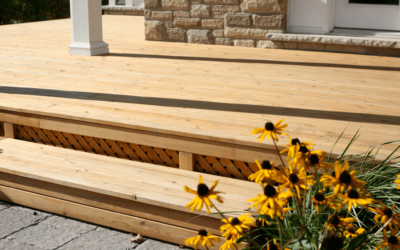Homeowners look for ways to increase their property value. One of the first things they think about is siding.
Two very popular options in the market today are James Hardie ColorPlus Siding and James Hardie Board siding. But which one is the best?
This article will help you decide which one would be best for your home. In this post, we put both products to the test! Keep reading to learn more.
What to Know About James Hardie Board Siding
James Hardie Board siding is a fiber cement board that looks like wood. It’s durable and resistant to fire, moisture, and pests. It is also able to withstand high winds.
This fiber cement siding is best when installed by a James Hardie Elite Preferred Installer. We make sure they have the knowledge, skillset, and manufacturer’s backing. We always deliver an exceptional siding product and experience.
The board materials include cement, sand, and cellulose fibers. This composite forms a strong, durable product. Here are some of the benefits:
- The material gets formed to look like wood or shingles
- The strong material holds up against severe weather and fire
- The boards come primed
- The boards are in the mid-price range of affordability
This solution comes primed and allows you to paint the siding with any color that moves you.
What to Know About James Hardie ColorPlus Siding
The ColorPlus technology comes pre-painted. The primed boards receive a factory coating of paint based on the buyer’s color selection. This provides your home exterior with a long-lasting and appealing appearance.
Here are some of the benefits:
- In factory priming and painting of boards
- Pre-painted boards come ready for installation
- Withstands UV rays
- Less fading
- Longer lasting vibrant color
The color selections make your color choice simple.
James Hardie ColorPlus vs. Primed Board Siding
Both types of James Hardie siding withstand tests of moisture and wind. Both siding alternatives are quite effective. But you’ll need to pick the one that best matches your needs.
The key differences between ColorPlus and James Hardie Primed board siding follow.
Color Choices
Primed boards offer almost countless color choices. Any minor touch-up repairs get painted to match the original color. Even caulking gets painted to match.
ColorPlus boards have a limited palette of 20 preset colors. A Dream collection extends your choices close to 700 colors. The colors are timely and popular.
Availability
The primed boards are rarely out of stock and have immediate availability. ColorPlus boards have to be specially ordered.
Save Cash
Primed boards can save a little cash up front compared to ColorPlus boards. While primed boards are cheaper, you have to paint the entire exterior.
30-Year Product Warranty
Both sidings carry the same 30-year limited warranty. The warranty requires a James Hardie Elite Preferred Installer like Contract Exteriors. Non-preferred installers void the warranty.
15-Year Paint Warranty
There is no color warranty available for the primed boards. They will eventually need re-painting years after installation. The only paint warranty will come from the paint company you choose.
ColorPlus comes with a 15-year limited warranty. The warranty covers the paint and labor. The warranty covers peeling, cracking, and chipping.
Most paint warranties cover the paint only, not the painters. The duration is 2-3 years in length, although there are a few companies that have a 7-year warranty.
But ColorPlus stands at 15-years. This is possible because of the factory color coating technology.
Types of James Hardie Siding
James Hardie fiber cement siding comes in several styles. Not all styles are available in both the Hardie Board siding and ColorPlus. You’ll want to check with your James Hardie Elite Preferred Installer to learn what is available.
Here are the types of planks:
Plank Lap Siding
This is the top seller in North America. It has a timeless design and comes in several types of textures.
- Select Cedarmill—A soft cedar wood look
- Beaded Cedarmill—The bead is popular in coastal communities
- Smooth—A sleek modern looking siding
- Beaded Smooth—A modern look with a cozier feel
Textured Panels
The panels empower you to achieve your dream look. Architects use these panels for contemporary textures and architectural lines. They get used for styles that are traditional, ultramodern, or something between.
- Fine Sand—A fine-textured, smooth, and consistent finish
- Fine Sand-Grooved—Fine textured, smooth finish with grooves milled every 16-inches
- Mounded Sand—This gives the rough-textured, stucco look
Shingle Siding
Shingle siding has become popular for architectural highlights. The style is no longer used solely for Cape Cod-style homes. Today, shingle siding or “shake siding,” provides instant character to any home.
- Straight Edge Panel—A clean-lined shingle look gives a touch of refinement
- Staggered Edge Panel—A laid-back style used for cottages and ranch homes
Vertical Siding
Architects mix and match styles to enhance the character and curb appeal of homes. The use of intermixing vertical siding creates that often requested look.
- Select Cedarmill—A soft cedar wood look
- Smooth—A sleek modern looking siding
- Stucco—A warm and inviting look
- Sierra 8—A subtle combination of texture and linear detail
Trim Products
When focused on siding, people tend to forget about trim. It is the final touch on any architectural design. Trim shows up in several forms, including:
- Corners
- Columns
- Fascia
- Soffit
- Window and Door Trim
- Band Boards
Trim Boards
While some choose to use trim to create clean edges, others use it to accentuate the design of the house. The good news is that the long-lasting material used to make the siding is also used for the trim.
- Rustic—A wood-like raised texture with a vintage look
- Smooth—A timeless style
- Rustic Grain Batten Boards—A rustic grain finish
- Smooth Batten Boards—A more traditional/contemporary look
Soffit Panels
Soffits cover the underside of the roof eaves and exterior porch ceilings. They come in both solid and vented profiles.
- Non-Vented Cedarmill—Raised texture that looks like wood
- Beaded Porch Panel—A charming beaded texture with a cottage look
- Non-Vented Smooth—A timeless style
James Hardie Elite Preferred Installer
The best type of siding is up to you. You can select from different styles as well as types of siding. The key is selecting a preferred installer that provides the full 30-year warranty.
Contact Contract Exteriors today for your next siding project. We’ll help you determine which siding is best for the look you desire. Also, feel free to request a sample James Hardie product.



